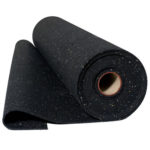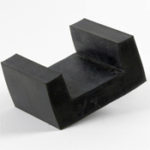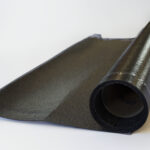
While laminate flooring is less expensive than hardwood, durable and available in a wide variety of styles and finishes, it has one downside — it increases the noise levels in a room. Echoes can make it hard to watch TV, listen to music or carry on a conversation in a room with this flooring material. The good news is that you can soundproof it.
Understanding Sound’s Interaction With Laminate Floors
Sound energy affects laminate floors in two main ways — through impact and air. Each type of sound behaves differently and requires its own soundproofing approach.
Impact noise happens when solid objects hit each other. Think of how footsteps cause the floor to vibrate, and those vibrations can be heard in the space below.
Airborne noise is sound that travels through the air. Examples include talking, TV sounds or music. These noises come from vibrating air molecules. Dense surfaces can get in the way of that movement. Some sound will still get through, but much of it gets absorbed or reflected.
Laminate floors are often the first surface that sound waves hit. They also reflect sound that has already bounced off walls or ceilings. The result? More echo and more noise in the room.
Tips for Soundproofing Laminate Flooring
Depending on your needs and budget, there are several ways to effectively soundproof laminate flooring. Here are a few options.
1. Install Soundproof Underlayment for Laminate Floors
You can reduce noise from impact, such as footsteps, and airborne sound transmission — such as noise from voices, TVs and stereos — by softening your laminate floors from underneath.
Soundproof Cow’s Step Above® Flooring Underlayment is an effective sound-dampening materials you can use. Our Impact Barrier QT Flooring Underlayment is a similar option made with eco-friendly material that is perfect for soundproofing all kinds of flooring, including laminate.
2. Use Area Rugs with Rug Pads
Sometimes the most simple solutions offer the greatest benefits. If replacing or reinstalling the floor is not an option, try using area rugs combined with dense rubber pads beneath them. While this approach won’t block structural noise, it will help reduce echo and soften footfall.
3. Add Mass to the Ceiling Below
If you have access to the ceiling below your laminate floor, adding mass to this surface can significantly reduce noise transfer. This approach works particularly well in multistory homes or apartments.
4. Install Floor Joist Isolators
If you are renovating or building a new house and have access to the subfloor, you may want to consider floor joist isolators. These materials go between the floor joists and the subfloor to separate them. This decoupling stops vibrations from transferring through the building’s structure.
Contact Soundproof Cow for Laminate Floor Soundproofing Assistance
Soundproofing laminate flooring is not about one magic fix — it is about combining the right materials to reduce both airborne and impact noise. Whether you are building from scratch or upgrading an existing room, Soundproof Cow has the products and know-how to help you mooove in the right direction.
Ready to soundproof your laminate floors? Get started with a free acoustic analysis from our experts. We are here to help you find the right solutions for your space.









